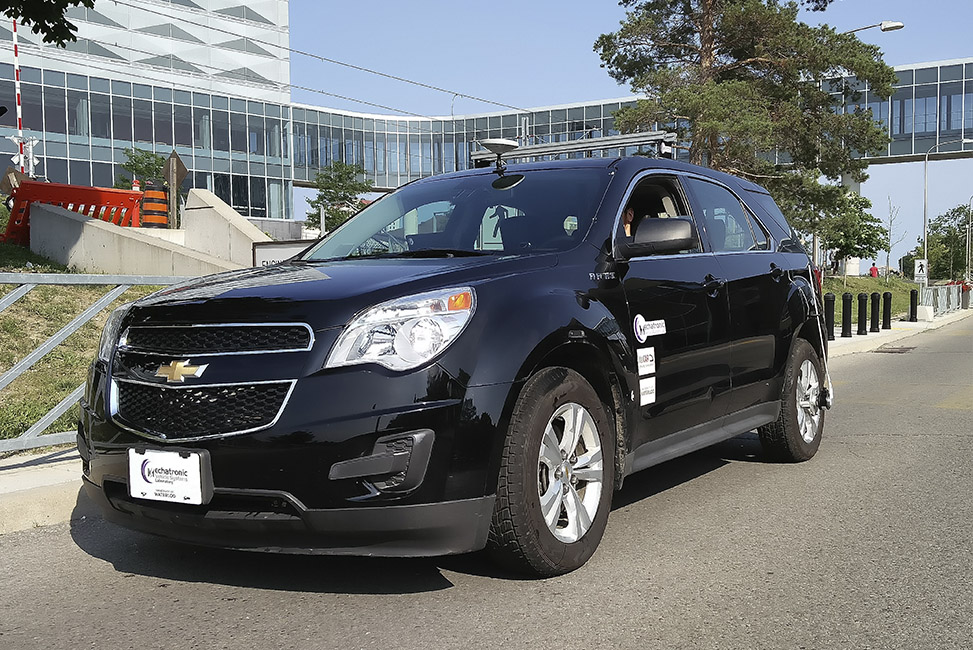
How Self-Driving Cars See
Continuing advances in positioning and sensor integration are a key to the development of fully autonomous vehicles (AVs). The technologies used to position and navigate AVs include LiDAR, radar, sonar, cameras, satellite navigation (GNSS), and inertial navigation systems (INS), which integrate data from inertial measurement units (IMUs). Many of these sensing capabilities are already being implemented on the advanced driver assistance systems being developed by many of the major automotive manufacturers.
For collision avoidance, AVs rely on imaging systems, such as cameras and LiDAR, which recognize objects on the horizon and determine their position relative to the vehicle. These systems also assist navigation by detecting lane markings, curbs, and traffic control devices. For navigation and positioning—including staying in their lanes, which requires decimeter-level accuracy—AVs rely on differential GNSS receivers. However, these receivers cannot provide data on speed and acceleration as accurately, consistently, and rapidly as is needed for autonomous driving—and they cannot operate at all where they lack a clear view of the sky, such as in urban and natural canyons, tunnels, etc. This is where an INS, which monitors the dynamically changing movements of the vehicle, comes into play. Conversely, however, all INS inevitably suffer from drift over time due to accumulating measurement errors and need to be periodically re-initialized whenever reliable GNSS signals are available.
Benefits of Inertial Navigation Systems
In addition to providing data about the trajectory of a vehicle as a whole, INS also measure its attitude (roll, pitch, and yaw), thereby enabling the software to better correlate and interpret the data from the other sensors. For example, when a car breaks sharply, its front end goes down and any forward-facing sensors measure distances to points closer to the car than they did a moment earlier, when its chassis was parallel to the street surface. INS can also detect unsafe conditions, such as excessive slip angle, which is the angle between the direction of the rolling wheels and that in which the vehicle is actually pointing (true heading). A slip angle as small as 0.5 degrees can trigger skidding, spins, or rollover, especially in the case of SUVs and tall trucks.
The Applanix Solution
The latest version of the Applanix POS LVX system, an integrated GNSS-IMU solution, introduced in late September at the INTERGEO 2017 conference in Berlin, supports dual-antenna heading for high accuracy in dynamic conditions. It is able to determine roll and pitch with a precision of 0.03 degrees and true heading with a precision of 0.09 degrees.